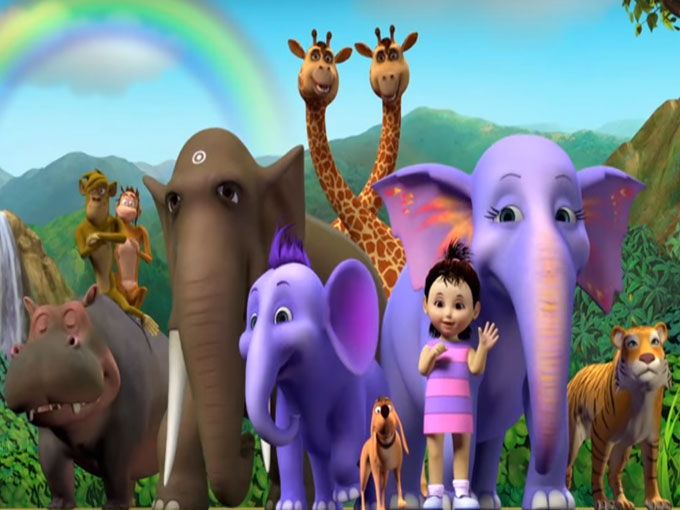Since launching in February 2015, YouTube Kids hasn’t be one to miss a scene. With 10 billion views under its belt, the child-friendly video app has been nestling itself inside the pockets of 26 markets—the most recent of which being India, which is offering a unique level of potential.
“In Asia, there is a 44% internet penetration, with roughly 1.8 billion active web users. And that includes fixed and mobile connections,” says Don Anderson, head of kids and learning partnerships at YouTube APAC (Asia-Pacific). “There’s so much potential upside to being able to bring content to these markets.”
Currently, India is the second-largest market in the world, but its population still focuses heavily on traditional media such as television, newspapers and magazines, according to eMarketer. However, Anderson says now is the right time to jump in with the ad-supported app because of the market’s growth potential, especially given that India has 250 million children under the age of nine.
“When you look at India, there is still so much opportunity to be had given that internet penetration is a mere 28% of its 1.3-billion population, while mobile connection penetration is around 77%,” says Anderson. “India is a mobile-first country, with the majority of internet users going online via their phones.”
So far, YouTube and YouTube Kids have found the move into India worth the risk due to how much the country’s mobile user base is growing. Anderson says that for YouTube as a whole in India, watch-time has increased 75% year-over-year. As for kids and learning content, there is 100% growth year-over-year.
By comparison, Singapore, where YouTube Kids also recently launched, has seen a smaller boost in YouTube watch time of only 35%. Anderson believes it is due to how deep internet penetration already is in the country, where it sits at 83%, with mobile connections that top 145%.
“You have to look at digital patterns in India. Many people are coming online for the very first time and the potential is just enormous,” says Anderson.
However, there are certain complications. For one, YouTube reaches a smaller percentage of non-English speakers as it is available only in English in the territory. Anderson says he is looking to change this by launching YouTube Kids in India with location-specific creators, and working with these influencers to boost their channels’ visibility.
“We’re seeing a lot of big YouTubers coming out of India and markets like the Philippines and Indonesia. There’s a bit of a movement going on right now and it’s been very positive,” says Anderson. “We’ve worked closely with family creators since the earliest days of their YouTube channels, helping them expand their audiences and identifying where potential areas for growth are, including monetization. In India, top family creators will be adding new shows exclusive to the YouTube platform on the occasion of the YouTube Kids launch.”
These include new learning shows from ChuChuTV and Kids TV, a new season of Cat & Keet, a popular chase comedy show by Toonz Animation, the Gummy Bear song in Hindi, and a new season of Appu – The Yogic Elephant (pictured).
Anderson says another way to succeed in a new market like India is to listen to what the parents want—which is largely educational content.
“We do focus very much on the educational side. We spend a considerable amount of our money on this, so I think it will bring kids a platform to explore worldly topics,” he says.
Speaking of worldly, besides India and Singapore, YouTube Kids recently launched in Malaysia and the Philippines, following launches in Australia and New Zealand last year.
Although these countries previously had access to YouTube proper, Anderson says there are a lot more opportunity for users and creators with the addition of the child-specific app.
“It’s built for kids, for those pudgy little fingers. It is content that’s rich and nourishing for them,” he says.

























